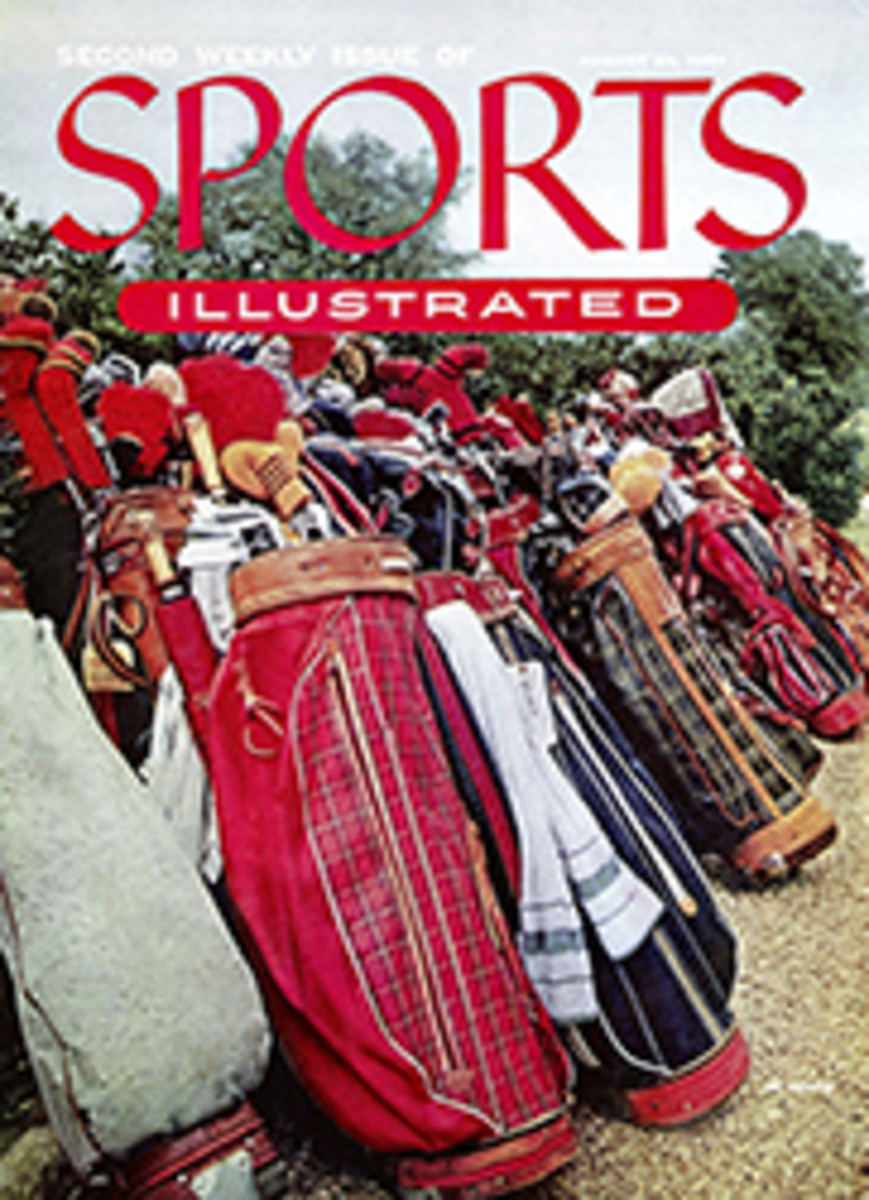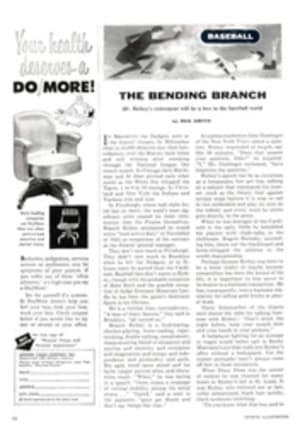
BACK PACKS FOR BUSH TRAVELING
One of the devices Torquemada missed when he was in a torturing mood was the tumpline, the leather headband developed by the American Indian for toting everything movable from papoose boards to canoes. A northern Indian will not move without his tump. I once saw a band of Algonquins board a train in northern Quebec and every man hauled his luggage by tump, even those who had suitcases with good handles.
Agonizing though the tump is at times, it still remains the common denominator of bush travel.
For heavy packing the most usual method is the plain tump secured to a duffel bag forming the base of the load at the small of the back, with as many more sacks piled on top as you can stand. No shoulder straps. The whole load pulls back on the head and neck, making it impossible to turn your noggin even if Dagmar were taking a sun bath alongside the trail.
The one good thing about it is that you can shed the load in a flash by slipping the headstrap when stumbling over rough ground. Incidentally, when the load falls away, you feel like an ascending balloon.
Next up the notch is the pack harness, a skeleton arrangement of shoulder straps with tump added. It's a good rig for carrying two duffel bags strapped together, or for making up your own bundle encased in a pack cloth. It takes some doing, however, and considerable time to shape the bundle properly and if it doesn't "ride" right there's nothing worse.
In making up the bundle you first lay a pack cloth on the ground (six by seven feet is a good size), then place on it all the stuff you're going to carry and fold it so that it wraps into a snug, tight bundle. After the harness is fastened around it and tightened you take the whole thing aboard. The advantage of this kind of pack is its flexibility. It can be made into any size or shape and is shrinkable as you eat into your provisions. Against it is the time required to make it up, the danger of the weight being off center unless it's wrapped just so.
I am strong for the combination of shoulder straps and tump for bush travel and have little use for the various all-shoulder-strap affairs such as the knapsack and rucksack. These small packs are fine for short excursions, for the hiker who sleeps in at night and can replenish his provisions along the way. But they are not for the camper who must lug everything from start to finish.
When the going is hard he can slip out of the shoulder straps and use the tump. When the going is easy he can get relief by discarding the tump and using his straps.
The pack harness, although it has the combined arrangement, is not the answer mainly because of the headache involved in making it up. The Duluth type of packsack is the solution in my opinion, the nearest thing to perfection yet devised for bush packing. A big, tough sack with straight (as opposed to cross) shoulder straps and tump, it has a flap which comes halfway down the back, on which are three long adjustable straps so that the sack can be fitted for large or small loads. The shoulder straps are reinforced with riveted leather patches so firmly fastened that the sack could probably take a load of pig iron without ripping.
The big size will hold all the duffel and grub needed by one man for a week's sleeping-out cruise. It is low riding and surprisingly comfortable. Turned inside out and stuffed with leaves, it makes a good sleeping pillow. It stows well in a canoe.
That is one trouble with the pack basket, a wicker affair covered with canvas which is a favorite in some sections of the Northeast: it doesn't stow well in a canoe, being rigid, nor does its size diminish as you eat your way to the bottom of it. But it is a fine pack for bottles and sharp-edged cans since they cannot dig into your back as they sometimes do through a packsack. For the bush, however, it's too bulky and stiff and takes up too much room.
Another rigid device is the pack frame, popular in the Northwest. A canvas-covered wooden frame with thongs for tying on a load of any size or shape, it's a good rig for portaging heavy stuff. Like the pack basket, it is not pliable and a bit elaborate for a confirmed sack man, as I am.
The old north woods axiom "Go light, but right" still holds and the best way to follow that advice is to spurn the fancier rigs and make use of the old stand-bys—the canvas duffel bag, the smaller sacks for perishables, and the Duluth for the base pack, the foundation of the load. The perfect trip is one in which not an extra ounce is carried and ends in sight of civilization with the larder absolutely empty.
It takes close figuring to strike the balance between overloading and underdoing it. This became an annual game with a friend of mine to see how close we could come to the line on a 10-day canoe trip.
We used to figure on 30% of our provisions coming off the land—grouse and ducks in the fall and all the fish you could eat. At last, after getting closer each year, we finally came out just right. On the banks of the Coulonge River in Quebec on the edge of the first town we'd seen in several days, we finished the last scrap of food.
"Some day," my friend said, "they'll invent sacks of edible material and we can munch them the last couple of days and come back with nothing at all."
"Even edible tumplines?" I asked.
"No, not tumplines," he said, thinking of what they'd done to him on the portages. "If they could be eaten, I'd devour 'em the first day out."
PHOTO
DULUTH PACK, shown with tump in place and its straps loose, is most versatile.
ILLUSTRATION

